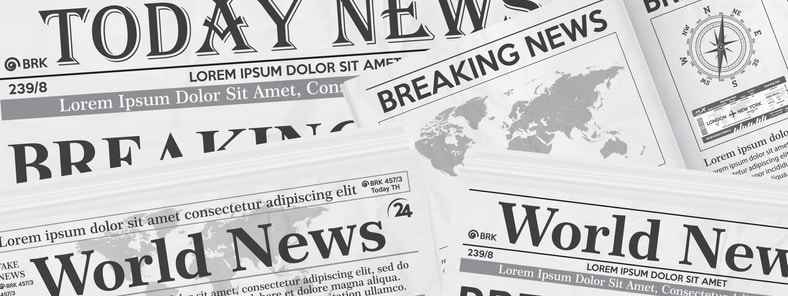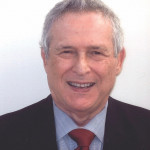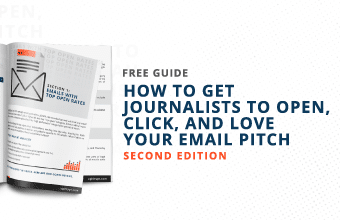During my long PR career, I was called a maverick because I often disagreed with my colleagues’ widely accepted PR principles, and when we came to a fork in the road, I took the one less used.
Here are some beliefs that set me apart from the clan:
1. Don’t pitch ideas based on media commentary—it’s old news
PR people who rely solely on broadcast news, sports commentary and social media outlets to get their information can learn many lessons—none of them good.
Because unlike the detailed information reported in major respected print publications, those reports are mostly incomplete, and are often inaccurate, with many being deliberately biased.
Prime examples of the above are Fox News, which knowingly broadcasts unproven “facts” that appeal to its hard-right audience and MSNBC, which, while not broadcasting untruths, slants it reports to appeal to a left-wing audience.
Unlike the detailed reporting in major print outlets, the overwhelming majority of reporting by Fox News and MSNBC is similar to only reading the opinion columnists and editorials of print publications. The least watched cable network, CNN, broadcasts more hard news than their two opinionated rival networks, but the great majority of their reporting is a limited headline-like rehash of what has already appeared in the major print publications.
That’s why client program-planning based on what the TV broadcasters are talking about should be dismissed because by the time a PR program is crafted it’s old news to TV producers.
Unfortunately, crafting pitches to journalists based on what is being covered on TV broadcasts, is a much used technique that rarely works, because editors and producers have a ready list of known experts that are always available to comment on headline/breaking news topics. And by the time a PR person contacts a client to see if the person is interested in commenting, the decision on which guest commentators to use has already been made by TV producers.
But since so many TV news programs are based on what has been reported in the a.m. dailies, there is a method that I often used to obtain a TV interview for a client: Secure a placement in a major print pub and send the article to TV producers, as I have done many times with success.
2. Keep up with the news by reading the dailies.
Since PR people craft their client programs on what they believe will catch the eyes of reporters, editors and TV producers, it is imperative that reading the major print pubs should be a must to make certain that what they think is new is new and has not recently been done previously by another agency.
Reading print publications also provides a pathway to the likes and dislikes of journalists, thus preventing PR people from wasting theirs and the journalists’ time by pitching stories that have no chance of being used.
That’s why I always insisted that people reporting to me must scan the New York Times and Wall Street Journal, and one or two tabloids each day, during their first hour in the office. as I did (and still do), as I was instructed to do when I was first hired as a novice reporter. “There are certain to be facts that are further down in the articles that we can expand on and turn into new reporting,” I was told. “Find them.” I continued to do that as a PR practitioner and often developed successful story angles based on those hidden facts.
I’ve also always believed that the best pitches to editors and producers should include several different ways that a story can be reported on, and I’ve always suggested several different approaches that can be taken.
It always amazes me that so many people in our business get their ideas for programs and pitches from watching a few minutes of TV shows, when detailed long form articles in print publications offer so much more information that could generate ideas.
An op-ed column by Nicholas A. Ashford, a professor of technology and policy, and the director of the technology and law program at the Massachusetts Institute of Technology, in the New York Times on March 31, 2021, was titled “The Lies on Broadcast Media.”
The article said, in part, “Television and radio are often full of misleading information, both on news programs and in advertisements, and the broadcast gives the information a whiff of legitimacy.” PR people should remember this when crafting programs based on what they saw on TV or heard on radio
3. Choose media targets wisely and objectively.
Importantly, I’ve always told people who reported to me to be very selective of the media they contact when trying to arrange an interview for a client and that they should only offer interviews to print and TV journalists that have a record of permitting a client to include talking points during the interview.
Doing that means eliminating some prestigious outlets, but our job is to promote a client’s product or point of view about a situation and reports that omit talking points do not accomplish that.
(I once received a letter from an attorney of a major morning network TV show who admonished me because during a client interview that I arranged for a celebrity, the celebrity mentioned the name of the product he was promoting, which I told him to do. “You were told when you arranged the interview that specific names of products by guests are against our network’s rules. We await your reply.” My reply was, “I’m not in the business of providing prominent guests for your program that benefits you without any benefit to my client.” And the world didn’t crumble.)
4. Make sure the coverage serves the client.
I also never understand why account people applaud themselves for scoring a hit that does not help the client
Example: A 700-word interview with a spokesperson hired to hawk a product often excludes client talking points. This is especially true when the spokesperson is an athlete and the story is built around the athlete’s career, with the lone mention of the client being, “So and So is a spokesperson for the XYZ company.” How that helps a client is beyond my reasoning.
5. Always choose quality over quantity.
I’ve also always believed that it’s not the number of placements that is important—it’s the quality of the placements. And that means targeting major publications and TV shows.
Experience shows that one hit in a major pub or TV show will be remembered by clients more than 1000 clips in small-town papers with miniscule readers.
Two other aspects of public relations that I disagree with are glitzy press kits and clipping services.
6. Don’t overdo it on press kits.
I understand why a client might want an exquisitely crafted press kit for a major new announcement, even though they are an expensive undertaking. But if you’ve ever been inside a newsroom, you would notice that reporters usually take out the lead story, a bio and photo from the kit and toss the remaining 95 percent of it. Thus, I’ve advised clients to let the agency craft a stripped down kit and let us use the saved money for media outreach, which can help disseminate the client’s message.
7. Think twice about clipping services.
Clipping services are expensive and, in my opinion, do nothing to help spread a client’s message. I have often advised clients to limit the service to papers with 25,000 circulations or more and let the agency use the remainder of a clipping service budget for additional media outreach.
My advice to novice PR practitioners is to try to think outside the box. If you can do so successfully, you can have a chance of climbing the ladder instead of holding it for someone else.








